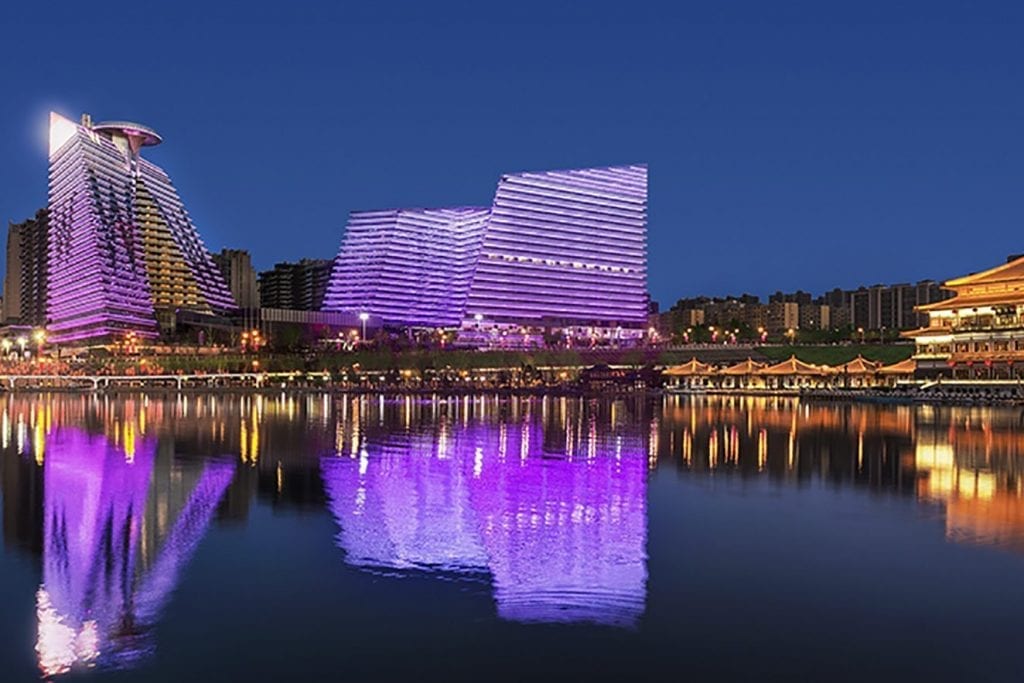Asia is quickly becoming a powerhouse in the global events sector, with China accounting for much of the growth.
As a destination in transition, however, certain cities and regions stand to gain the most events business due to more developed infrastructure for hosting large meetings and conferences.
A new report from TUI-owned Pacific World outlines the growth of China’s event sector and the trends that are determining its path forward. China’s Belt Road Initiative is bringing visitors from destinations around the world to meet and do business in more secondary cities.
“Industrial cities drive trading interests from all over the world,” states the report. “Traditionally all the industrial and trading centers of China are located along the coastline, and so are the mega cities which contribute to GDPs. With [Belt Road Initiative] project, the inner lands and indo-China zone have been opening up faster than ever, and so has the infrastructure development of these cities. In the middle of all these industrial dots, there’s always one key city in each zone that plays a centralized trading spot supporting surrounding areas, and sometimes they are industrial centers themselves.”
Here is a breakdown of the most popular cities for events today and projections of the rising cities of tomorrow. Shanghai, for now, holds the country’s largest convention center.
| Popular Today | Emerging | 2024 & Beyond |
|---|---|---|
| Beijing | Xi’An | Nanjing |
| Shanghai | Chengdu | Ningbo |
| Guangzhou | Xiamen | Wuhan |
| Shenzhen | Qingdao | |
| Hangzhou |
Source: Pacific World
Today, the most popular conference cities are situated near the Chinese coast. Over the next five years, though, the boom will expand to major northern and western cities.
Since these convention centers will are new, they will be built with modern sustainability standards and a strong technology backbone, granting an advantage over dated venues in other destinations.
Given the strong penetration of mobile phone apps in the Chinese market, it is also likely that Chinese event planners will help pioneer new forms of mobile and digital engagement to suit the behavior of their Asian delegates.
WeChat, which accounts for 34 percent of total data traffic in China, is one of the more tantalizing platforms for event planners to experiment with.
“The WeChat API has the potential to revolutionize event planning with features including event registration and payment, real-time customer service and feedback, onsite social engagement and possibilities of virtual enhancements such as artificial intelligence recognition, virtual reality, and augmented reality interaction,” reads the report. “WeChat is the main attendee management tool being used in China. The app also assists with attendee information collection, push notification, agenda sharing, photo streaming/sharing during the event, social meeting and marketing campaigns all on the platform.”
As the future of meetings and events develops, there is little doubt it runs through China as the country continues its development as a leader in the global business community.
Subscribe to Skift Pro to get unlimited access to stories like these
{{monthly_count}} of {{monthly_limit}} Free Stories Read
Subscribe NowAlready a member? Sign in here
Subscribe to Skift Pro to get unlimited access to stories like these
Your story count resets on {{monthly_reset}}
Already a member? Sign in here
Subscribe to Skift Pro to get unlimited access to stories like these
Already a member? Sign in here
